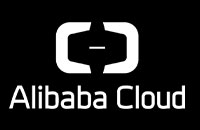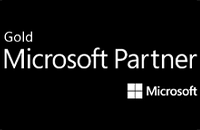Reimagine your
business in the cloud
Get the freedom to innovate, scale,
and harness the latest technologies
whenever you need to.
Introduction to cloud computing
What is cloud computing?
Cloud computing takes over the complexity of managing IT infrastructure, services and applications in-house, and delivers all the infrastructure and services you need – as you need them. Get Infrastructure-as-a-Service (IaaS), Platform-as-a-Service (PaaS) or Software-as-a-Service (SaaS).
Benefits of the cloud
Cloud computing gives you the ability to scale up and down, and tap into the latest tools – all without upfront investment. It’s more secure and reliable than on-premises infrastructure, and offers scarce high-level skills as a shared resource.
Why cloud is the future
To take advantage of changing trends like hybrid work, the use of generative AI to transform business, and big data analytics to inform smart business decisions, you need the scalability of the cloud.

As an agnostic cloud advisory and consulting service provider, BCX offers a range of services to help organisations make their cloud journey a strategic one aligned to their goals and the value they expect. This helps eliminate challenges such as unexpected complexity and cost, and helps assure better outcomes. The BCX Cloud Advisory and Consulting service assesses cloud readiness, develops suitable cloud strategies, and identifies the most appropriate cloud platforms for their needs.


Types of cloud environments
The cloud is not a one-size-fits-all environment. Multiple models and numerous vendors exist in the market, allowing organisations to tailor their cloud strategies to suit their requirements and budget.
Advantages
- Public clouds offer access to resources quickly and with low to no upfront costs. Payment is monthly, or per-use.
- Public cloud services can deliver enhanced performance, security and resilience.
- Most public cloud services offer extensive tools and solutions.
Disadvantages
- The costs of public cloud can escalate due to misuse, a lack of control, or the costs of data transfer.
- Public cloud infrastructure can hamper customisation.
Advantages
- Organisations gain greater control over their cloud environments.
- Private cloud may offer the benefits of cloud, without compliance and data sovereignty risks.
Disadvantages
- Managing a private cloud may require more in-house skills and resources than a public cloud.
Advantages
- A hybrid cloud model can allow organisations to maximise their on-premises investments while still benefiting from the cloud.
- Hybrid models allow organisations to retain certain sensitive data on-premises.
Disadvantages
- Design and implementation of a hybrid cloud environment can be complex.
- Governance, security and visibility can be challenging.
- On-premises infrastructure requires fixed costs and skills resources to manage and maintain.
Advantages
- Multi-cloud models allow organisations to optimise costs and performance by sourcing appropriate resources from multiple cloud services providers.
- Hybrid models enhance reliability and redundancy.
Disadvantages
- Multi-cloud models can increase complexity in management, governance and visibility.
- Cost management may become challenging across multiple pricing models.
Public Cloud
Advantages
- Public clouds offer access to resources quickly and with low to no upfront costs. Payment is monthly, or per-use.
- Public cloud services can deliver enhanced performance, security and resilience.
- Most public cloud services offer extensive tools and solutions.
Disadvantages
- The costs of public cloud can escalate due to misuse, a lack of control, or the costs of data transfer.
- Public cloud infrastructure can hamper customisation.
Private cloud
Advantages
- Organisations gain greater control over their cloud environments.
- Private cloud may offer the benefits of cloud, without compliance and data sovereignty risks.
Disadvantages
- Managing a private cloud may require more in-house skills and resources than a public cloud.
Hybrid cloud
Advantages
- A hybrid cloud model can allow organisations to maximise their on-premises investments while still benefiting from the cloud.
- Hybrid models allow organisations to retain certain sensitive data on-premises.
Disadvantages
- Design and implementation of a hybrid cloud environment can be complex.
- Governance, security and visibility can be challenging.
- On-premises infrastructure requires fixed costs and skills resources to manage and maintain.
Multi-cloud
Advantages
- Multi-cloud models allow organisations to optimise costs and performance by sourcing appropriate resources from multiple cloud services providers.
- Hybrid models enhance reliability and redundancy.
Disadvantages
- Multi-cloud models can increase complexity in management, governance and visibility.
- Cost management may become challenging across multiple pricing models.
Cloud service models
Cloud service models have expanded and evolved, allowing customers to select applications, platforms, infrastructure, security or everything they need in their IT environment, as a service. Procuring anything – or everything – as a service eliminates capex, allows businesses to scale and move faster, and offers a range of benefits.
Description
Advantages
- IaaS delivers scalability and self-service provisioning.
- IaaS offers direct control over systems.
- IaaS through a reputable service provider can offer improved reliability, performance, redundancy and resilience.
- IaaS makes infrastructure quick and easy to deploy, and can reduce costs if properly managed.
Disadvantages
- IaaS costs can escalate through runaway inventory, if not properly managed.
- IaaS experience is dependent on network performance.
- Certain regulations and industry standards may hinder use of cross-border IaaS.
Description
Platform-as-a-Service builds on an laaS platform to offer middleware and development tools and environments. PaaS may be delivered in a public, private or hybrid model.
Advantages
- PaaS offers scalable, cost-effective development environments, if managed properly.
- PaaS gives instant access to the resources needed to build applications, and responds to changing market requirements, faster.
- PaaS reduces operational responsibilities.
Disadvantages
- If not carefully managed, PaaS can result in unexpected costs.
- PaS can prove more expensive than laas.
- Potential for integration and compatibility issues and vendor lock-in.
Description
Advantages
- SaaS gives organisations subscription-based access to cutting-edge tools with lower upfront costs.
- SaaS solutions are readily accessible, scalable and easy to deploy and manage.
- SaaS typically offers cost savings.
Disadvantages
- SaaS offers less control and customisation options.
Infrastructure-as-a-Service (IaaS)
Description
Advantages
- IaaS delivers scalability and self-service provisioning.
- IaaS offers direct control over systems.
- IaaS through a reputable service provider can offer improved reliability, performance, redundancy and resilience.
- IaaS makes infrastructure quick and easy to deploy, and can reduce costs if properly managed.
Disadvantages
- IaaS costs can escalate through runaway inventory, if not properly managed.
- IaaS experience is dependent on network performance.
- Certain regulations and industry standards may hinder use of cross-border IaaS.
Platform-as-a-Service (PaaS)
Description
Platform-as-a-Service builds on an laaS platform to offer middleware and development tools and environments. PaaS may be delivered in a public, private or hybrid model.
Advantages
- PaaS offers scalable, cost-effective development environments, if managed properly.
- PaaS gives instant access to the resources needed to build applications, and responds to changing market requirements, faster.
- PaaS reduces operational responsibilities.
Disadvantages
- If not carefully managed, PaaS can result in unexpected costs.
- PaS can prove more expensive than laas.
- Potential for integration and compatibility issues and vendor lock-in.
Software-as-a-Service (SaaS)
Description
Advantages
- SaaS gives organisations subscription-based access to cutting-edge tools with lower upfront costs.
- SaaS solutions are readily accessible, scalable and easy to deploy and manage.
- SaaS typically offers cost savings.
Disadvantages
- SaaS offers less control and customisation options.
Explore more cloud solutions
Cloud
IoT Solutions
> Seamless cloud-hosted connectivity solutions for all your data and devices for future-focused business agility.
Cloud
Digital Workspace Management
> Collaboration and communication tools to cater to hybrid working environments, allowing employees to engage from anywhere, at any time.
Cloud
Teleradiology
> Consolidating a network of radiologists with clinics and hospitals, speeding up clinical imaging and creating an efficient system for patient care.
Cloud
Dotcom Software Solutions
> Through its partnership with BCX, Dotcom Software Solutions with lead businesses through the cloud transition process with enhanced precision and efficiency using specialised Microsoft Cloud solutions.
Explore our thought leadership articles
Cybersecurity is a group effort
In this digitally evolving business environment, every business has become a data business. While this may not have been so in the past, the rapid pace of digital transformation has made data a core component of every organisation.
Read more about this Insight →
How CISOs can start addressing the technology fragmentation challenge
Technology fragmentation is a challenge facing almost every business. The problem occurs for a number of reasons. There are legacy systems that are critical, but have reached end of life and are no longer patched or supported, posing a massive security risk.
Read more about this Insight →


Your strategic partner of choice
We service diverse clients across industry sectors and geographies, providing perfectly tailored local and global solutions. We're constantly evaluating and connecting with the industry's most trusted technology companies to ensure you'll always have access to cutting-edge infrastructure. Work with us to safeguard your business success.
We have a wide footprint, with operations in Africa, Europe and the Middle East. With 5000+ people power, 310+ partner alliances, and 21 data centres, you're in safe hands.
Manufacturing
Mining
Retail
Finance
Government












